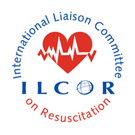Perkins GD, Neumar R, Hsu CH, Hirsch KG, Aneman A, Becker LB, Couper K, Callaway CW, Hoedemaekers CWE, Lim SL, Meurer W, Olasveengen T, Sekhon MS, Skrifvars M, Soar J, Tsai M-S, Vengamma B, Nolan JP; on behalf of the International Liaison Committee on Resuscitation.
The International Liaison Committee on Resuscitation calls for urgent multi-disciplinary international collaboration to accelerate the development of effective therapies to reduce the devastating effects of post cardiac arrest brain injury.
- · Post cardiac arrest brain injury kills tens of thousands of people each year
- · Future research should target the underlying mechanism of injury, quantify its severity, and measure the response to therapy
- · Multidisciplinary and international collaboration will be essential to realize the goal of developing effective therapies for post–cardiac arrest brain injury.
Two out of three people who initially survive a cardiac arrest later die from post-cardiac arrest brain injury. The primary goal of resuscitation is to achieve survival without neurological impairment, allowing individuals to return to their pre–cardiac arrest level of function. Treating cardiac arrest and its aftereffects consumes substantial health and social care resources. Post-cardiac arrest brain injury progresses through four distinct but overlapping phases: ischemic depolarization, reperfusion repolarization, dysregulation, and recovery and repair. Unfortunately, preclinical research has largely failed to translate into clinical practice due to the limitations of laboratory models of cardiac arrest and post-cardiac arrest brain injury.
Given the complexity of post-cardiac arrest brain injury, monotherapies are unlikely to be as effective as polydrug and multimodal neuroprotective therapies. To enhance treatment, biomarkers of mechanistic target engagement should be developed to identify patients with the targeted mechanism of injury, quantify its severity, and measure their response to therapy. Future trials must tailor therapies to the right patients at the appropriate time and dose. These studies need to be adequately powered to detect effect sizes that are realistic and meaningful to patients, their families, and clinicians.
Achieving the goal of developing effective therapies for post-cardiac arrest brain injury will require multidisciplinary and international collaboration.
For the full statement see the below links:
Circulation: https://www.ahajournals.org/doi/10.1161/CIR.0000000000001219
Resuscitation: https://www.resuscitationjournal.com/article/ S0300-9572(24)00089-3/fulltext
For any additional queries please contact: ilcor@heart.org
